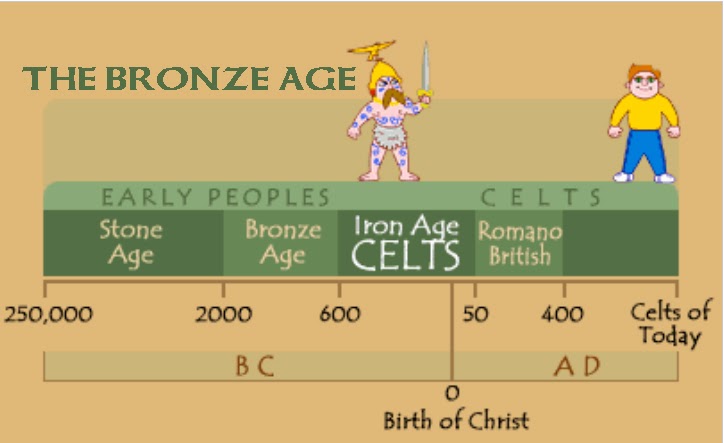The
Bronze Age was a time in early human history when people first began
to use tools made of bronze.
Bronze is a hard, yellowish alloy, or mixture of metals. People make
it by melting copper and tin together. The Bronze Age began in some
places about 5,000 years ago. It began later in other places.
Learning how to use bronze led to advances in many areas of human
life.
It
is widely thought, although not certain, that bronze was first
brought over to Britain by the Bell Beaker folk. They were so named
because of their distinctive bell-shaped pottery drinking vessels.
They probably came up through the south-west coast of Britain, which
at the time had rich deposits of copper and tin.
The
discovery of metal was a key event in human history. This was the
first material that could be moulded into any desired shape.
Additionally, metal was much stronger than stone and could be put to
much more effective uses. The first metal that mankind widely used
was bronze - an alloy of copper and tin. Although this new technology
arrived in Europe around 4000BC, it did not reach Ireland for a
further 2000 years.
The
beginning of the Bronze Age in Britain can be put around 2,000 BC.
Although not certain, it is generally thought that the new bronze
tools and weapons identified with this age were brought over from
continental Europe. The skulls recovered from burial sites from the
Bronze Age are different in shape from Stone Age skulls. This would
suggest that new ideas and new blood were brought over from the
continent. Stone and bronze can be used together, subject to the
availability of both materials. True bronze is a combination of 10%
tin and 90% copper. Both materials were readily available in Britain
at this time.
Link: RTE Bronze Age Video
(For teacher use).
Task 1: Click on the video and write down the main issue that these people are discussing in it.
Task 2: Click on the link below to find out what came before and after the Bronze Age.



